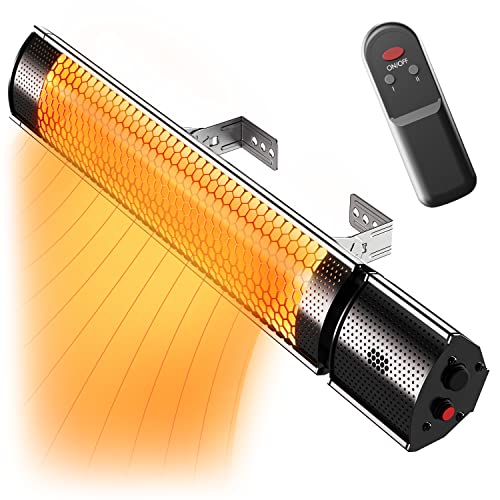How to Choose a Patio Heat Lamp Electric
When you want to heat your patio, there are several options. In contrast to propane models that require refills electric heaters can provide instant heat by simply flicking a switch or pressing the button.
These units also don't emit gasses that might pose a health risk. Some units have adjustable heat settings to accommodate different distances.
Type of Heater
With the right patio heater, you can comfortably relax in your outdoor living spaces into the night, and throughout the seasons. Patio heaters are available in many different styles that include freestanding propane or natural gas models and ceiling or wall mounted electric radiant heaters. Your choice will be based on the dimensions of the space, power sources available and personal preference.
The majority of patio heaters use electricity, liquid or natural gas to generate heat. They release heat through convection heating as well as radiant heating. Their output of heat is measured in watts and can be converted to British thermal units (BTUs) for comparison. Some models also have adjustable heat settings to allow for greater flexibility.
Patio heat lamps combine an electric burner on a pole, and an open-pored screen that reflects flames and radiates heat downwards to warm people, objects and furniture. Some outdoor heat lamps have reflective reflectors on top of the burner, which can be silvered to limit the amount of heat is lost upwards.

Gas patio heaters are the most common heaters for patios. They are able to heat multiple tables quickly and evenly. These heaters are portable and run from the propane tank or plugged into your natural gas line, with the latter offering more convenience and lower upfront installation costs, but also they require ongoing expenses for fuel.
A increasing number of homes are outfitted with natural gas lines, which makes them the ideal option for those who prefer a gas-powered patio heater. They're simple to set up, however they do require a dedicated and properly functioning gas line to perform safely. There are portable natural gas heaters equipped with extension hoses that help overcome this restriction, but they can create a tripping hazard and a fire risk when not in use.
Safety
Electric patio heaters are safe to use in covered areas, as they allow heat to radiate upward and not outward. However, they're not designed for use under an open roof; the heater must be installed at least 18" from the walls adjacent to it or 6" from the ceiling to prevent fire hazards.
The propane and gas patio heaters can only be used in enclosed areas that are fitted with an enduring cover made for outdoor use. These covers are usually made of fire-retardant fabric and have a roof that can be closed. These kinds of patio heaters are prone to security concerns due to the fumes and flames they generate. heater patio electric should be placed away from objects that can ignite like curtains and chairs.
Follow the guidelines and safety measures of the manufacturer when installing a patio heater or heat lamp. Choose a system that has been awarded UL and CSA safety certifications. Also, be sure to go through the owner's manual thoroughly. Be sure that the heater is out of the reach of pets and children. Some free-standing patio heaters like EUROM have a built-in tipping protection that shuts down the heater if it is tipped over.
If your patio heater is connected to a natural-gas line, it is recommended to check its condition periodically and be sure to have it tested by a qualified professional for leaks. If the line has to be replaced, make sure to hire an authorized plumber. A professional will be able to determine if the line is properly routed or should be run through an underground pipe. A professional can also make sure that the patio heater is connected to an outlet that is GFCI-rated (ground fault circuit interrupter) to guard against electric sparks and fires.
Installation
The size of the patio heater is positioned determines the amount of heat it can radiate into the space. The heater should be mounted away from surfaces such as plastic and wood that could deform. Depending on the model of the heater you may choose to mount it on a structure or wall using standard mounting brackets. Some models have a soft start feature, which decreases the peak current in order to protect your circuits.
